Synthesis, Characterization and Application of SnO2@rGO Nanocomposite for Selective Catalytic Reduction of Exhaust Emission in Internal Combustion Engines
Abstract
:1. Introduction
2. Results and Discussion
2.1. Characterization of rGO, SnO2, and SnO2@rGO Nanomaterials
2.2. Brake Fuel Consumption (BSFC) and Brake Thermal Efficiency (BTE)
2.3. Performance of Pollutant Adsorption by SnO2@rGO
2.4. Smoke Opacity
3. Materials and Methods
3.1. Materials
3.2. Synthesis of SnO2 Nanoparticles
3.3. Synthesis of Reduced Graphene Oxide/Tin Oxide (SnO2@rGO)
3.4. Characterization
3.5. Experimental Setup of Engine
4. Conclusions
Author Contributions
Funding
Data Availability Statement
Conflicts of Interest
References
- Mwangi, J.K.; Lee, W.-J.; Chang, Y.-C.; Chen, C.-Y.; Wang, L.-C. An Overview: Energy Saving and Pollution Reduction by Using Green Fuel Blends in Diesel Engines. Appl. Energy 2015, 159, 214–236. [Google Scholar] [CrossRef]
- Atadashi, I.M.; Aroua, M.K.; Aziz, A.A. High Quality Biodiesel and Its Diesel Engine Application: A Review. Renew. Sustain. Energy Rev. 2010, 14, 1999–2008. [Google Scholar] [CrossRef]
- Ramírez-Verduzco, L.F.; Rodríguez-Rodríguez, J.E.; Jaramillo-Jacob, A.d.R. Predicting Cetane Number, Kinematic Viscosity, Density and Higher Heating Value of Biodiesel from Its Fatty Acid Methyl Ester Composition. Fuel 2012, 91, 102–111. [Google Scholar] [CrossRef]
- Cordiner, S.; Mulone, V.; Nobile, M.; Rocco, V. Impact of Biodiesel Fuel on Engine Emissions and Aftertreatment System Operation. Appl. Energy 2016, 164, 972–983. [Google Scholar] [CrossRef]
- Hoekman, S.K.; Robbins, C. Review of the Effects of Biodiesel on NOX Emissions. Fuel Process. Technol. 2012, 96, 237–249. [Google Scholar] [CrossRef]
- Yoon, S.H.; Suh, H.K.; Lee, C.S. Effect of Spray and EGR Rate on the Combustion and Emission Characteristics of Biodiesel Fuel in a Compression Ignition Engine. Energy Fuels 2009, 23, 1486–1493. [Google Scholar] [CrossRef]
- Vedaraman, N.; Puhan, S.; Nagarajan, G.; Velappan, K.C. Preparation of Palm Oil Biodiesel and Effect of Various Additives on NOX Emission Reduction in B20: An Experimental Study. Int. J. Green Energy 2011, 8, 383–397. [Google Scholar] [CrossRef]
- Wan Ghazali, W.N.M.; Mamat, R.; Masjuki, H.H.; Najafi, G. Effects of Biodiesel from Different Feedstocks on Engine Performance and Emissions: A Review. Renew. Sustain. Energy Rev. 2015, 51, 585–602. [Google Scholar] [CrossRef]
- Jeon, J.; Lee, J.T.; Park, S. Nitrogen Compounds (NO, NO2, N2O, and NH3) in NOX Emissions from Commercial EURO VI Type Heavy-Duty Diesel Engines with a Urea-Selective Catalytic Reduction System. Energy Fuels 2016, 30, 6828–6834. [Google Scholar] [CrossRef]
- Koebel, M.; Elsener, M.; Marti, T. NO x -Reduction in Diesel Exhaust Gas with Urea and Selective Catalytic Reduction. Combust. Sci. Technol. 1996, 121, 85–102. [Google Scholar] [CrossRef]
- Tadano, Y.S.; Borillo, G.C.; Godoi, A.F.L.; Cichon, A.; Silva, T.O.B.; Valebona, F.B.; Errera, M.R.; Penteado Neto, R.A.; Rempel, D.; Martin, L.; et al. Gaseous Emissions from a Heavy-Duty Engine Equipped with SCR Aftertreatment System and Fuelled with Diesel and Biodiesel: Assessment of Pollutant Dispersion and Health Risk. Sci. Total Environ. 2014, 500–501, 64–71. [Google Scholar] [CrossRef]
- Vallinayagam, R.; Vedharaj, S.; Yang, W.M.; Saravanan, C.G.; Lee, P.S.; Chua, K.J.E.; Chou, S.K. Emission Reduction from a Diesel Engine Fueled by Pine Oil Biofuel Using SCR and Catalytic Converter. Atmos. Environ. 2013, 80, 190–197. [Google Scholar] [CrossRef]
- Solaimuthu, C.; Ganesan, V.; Senthilkumar, D.; Ramasamy, K.K. Emission Reductions Studies of a Biodiesel Engine Using EGR and SCR for Agriculture Operations in Developing Countries. Appl. Energy 2015, 138, 91–98. [Google Scholar] [CrossRef]
- Peng, Y.; Li, J.; Si, W.; Luo, J.; Wang, Y.; Fu, J.; Li, X.; Crittenden, J.; Hao, J. Deactivation and Regeneration of a Commercial SCR Catalyst: Comparison with Alkali Metals and Arsenic. Appl. Catal. B: Environ. 2015, 168–169, 195–202. [Google Scholar] [CrossRef]
- Wetchakun, N.; Incessungvorn, B.; Wetchakun, K.; Phanichphant, S. Influence of Calcination Temperature on Anatase to Rutile Phase Transformation in TiO2 Nanoparticles Synthesized by the Modified Sol–Gel Method. Mater. Lett. 2012, 82, 195–198. [Google Scholar] [CrossRef]
- Liu, Y.; Liu, Z.; Mnichowicz, B.; Harinath, A.V.; Li, H.; Bahrami, B. Chemical Deactivation of Commercial Vanadium SCR Catalysts in Diesel Emission Control Application. Chem. Eng. J. 2016, 287, 680–690. [Google Scholar] [CrossRef]
- Liu, Z.G.; Ottinger, N.A.; Cremeens, C.M. Vanadium and Tungsten Release from V-Based Selective Catalytic Reduction Diesel after treatment. Atmos. Environ. 2015, 104, 154–161. [Google Scholar] [CrossRef]
- Piqiang, T.; Zhiyuan, H.; Diming, L. Effects of key operating parameters on SCR performance of diesel engines. Comput. Math. Appl. 2014, 65, 4063–4070. [Google Scholar]
- Premkumar, S.; Balaji, G. Exploration of Zeolite 5A as a Catalyst in the after-Treatment System of a CI Engine Powered by Plastic Oil Blend. IOP Conf. Ser. Mater. Sci. Eng. 2020, 912, 042028. [Google Scholar] [CrossRef]
- Sutjiono, R.; Tayal, P.; Zhou, K.; Meckl, P. Real-Time On-Board Indirect Light-off Temperature Estimation as a Detection Technique of Diesel Oxidation Catalyst Effectiveness Level. In Proceedings of the SAE 2013 World Congress & Exhibition, Detroit Michigan, MI, USA, 16–18 April 2013; Technical Paper 2013-01-1517. SAE International: Warrendale, PA, USA, 2013. [Google Scholar] [CrossRef]
- Premkumar, S.; Balaji, G. Experimental Investigation of HC and CO Emission Reduction from a Diesel Engine Powered by Plastic Oil Blend Using Fly Ash as Catalyst. J. Therm. Anal. Calorim. 2022, 147, 1535–1545. [Google Scholar] [CrossRef]
- De-La-Torre, U.; Pereda-Ayo, B.; Gutiérrez-Ortiz, M.A.; González-Marcos, J.A.; González-Velasco, J.R. Steady-State NH3-SCR Global Model and Kinetic Parameter Estimation for NOx Removal in Diesel Engine Exhaust Aftertreatment with Cu/Chabazite. Catal. Today 2017, 296, 95–104. [Google Scholar] [CrossRef]
- Xiong, S.; Xiao, X.; Liao, Y.; Dang, H.; Shan, W.; Yang, S. Global Kinetic Study of NO Reduction by NH3 over V2O5–WO3/TiO2: Relationship between the SCR Performance and the Key Factors. Ind. Eng. Chem. Res. 2015, 54, 11011–11023. [Google Scholar] [CrossRef]
- Iida, Y.; Ozaki, S. Grain Growth and Phase Transformation of Titanium Oxide during Calcination. J. Am. Ceram. Soc. 1961, 44, 120–127. [Google Scholar] [CrossRef]
- Das, S.; Jayaraman, V. SnO2: A Comprehensive Review on Structures and Gas Sensors. Prog. Mater. Sci. 2014, 66, 112–255. [Google Scholar] [CrossRef]
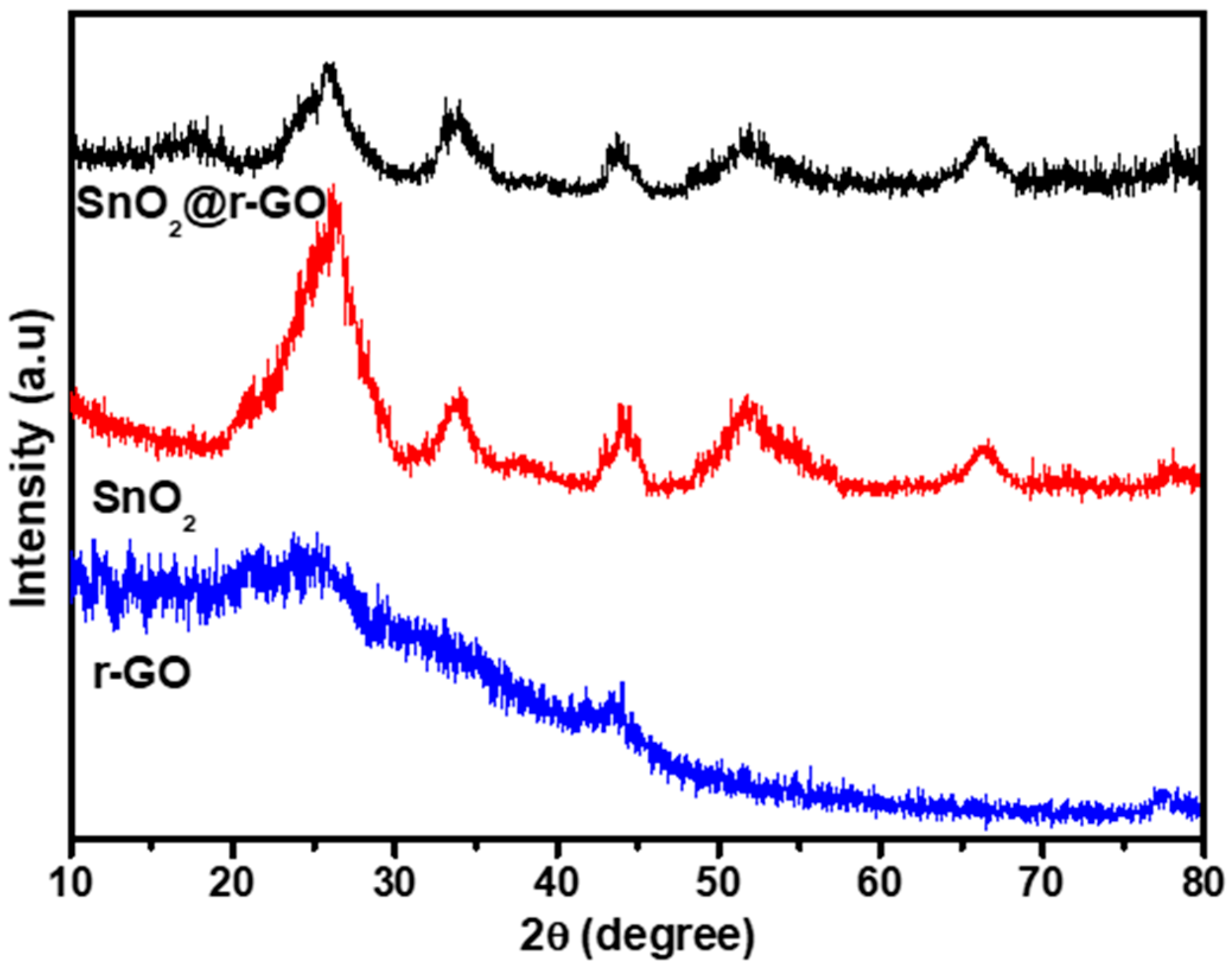
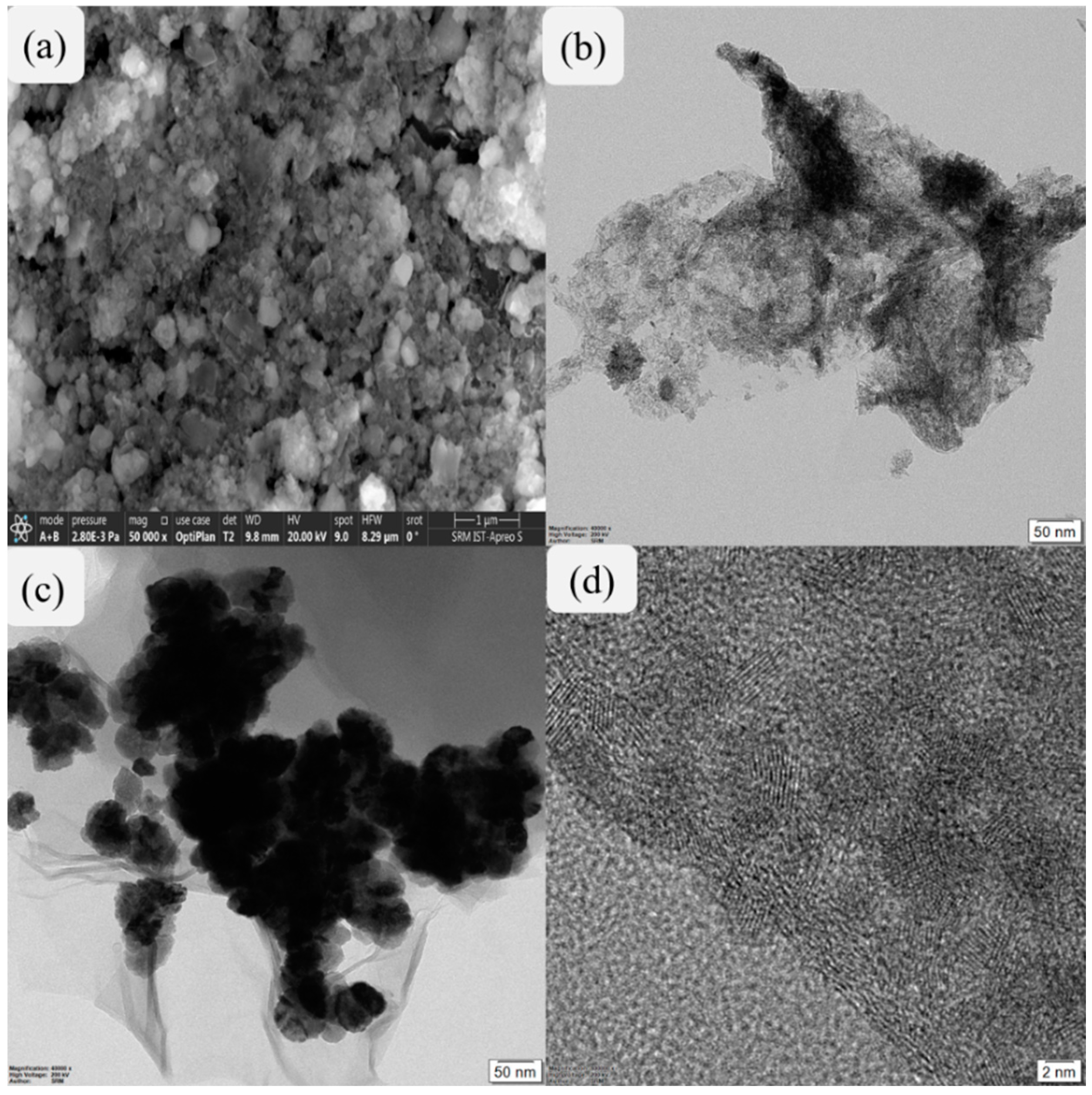
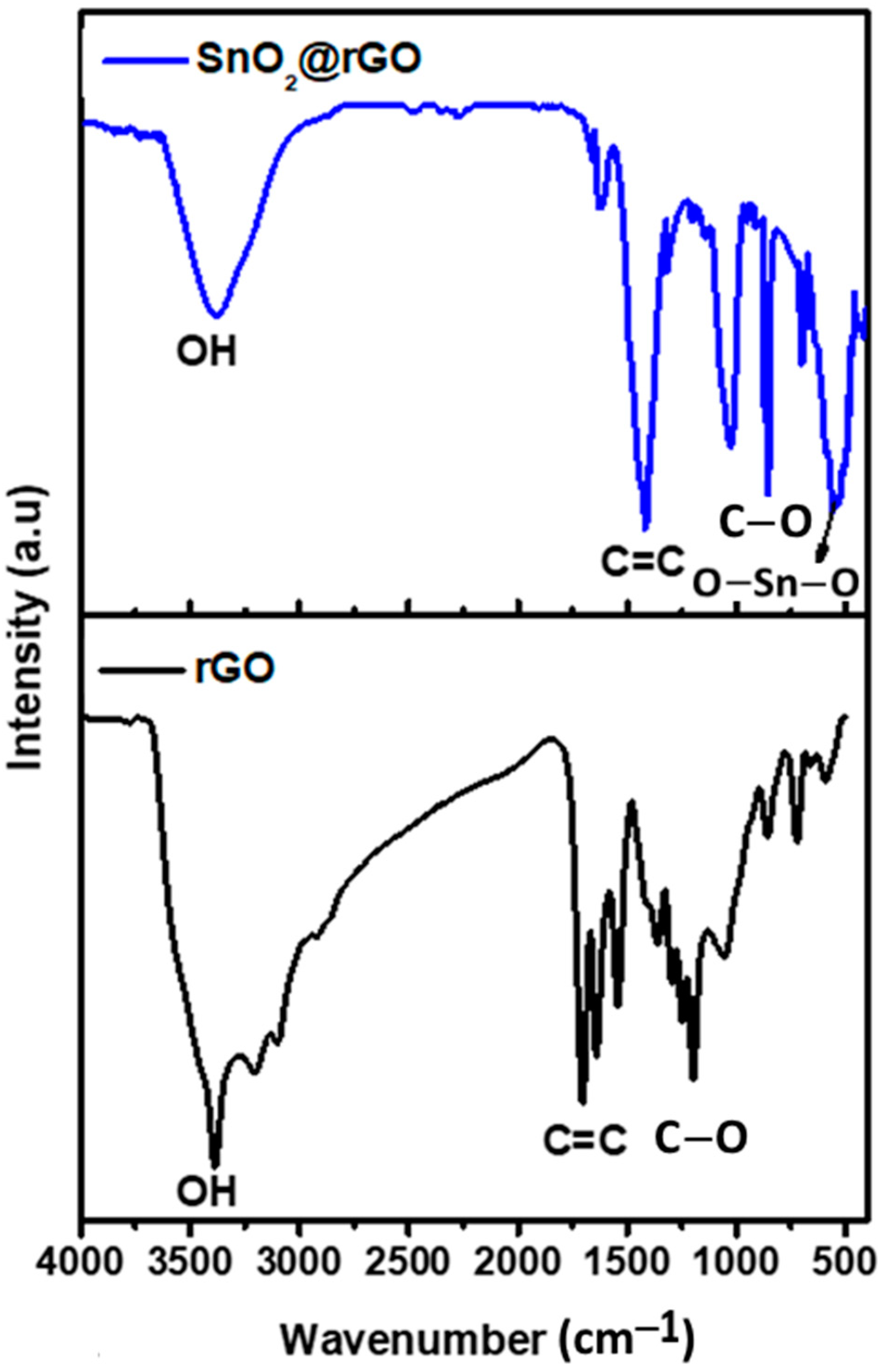
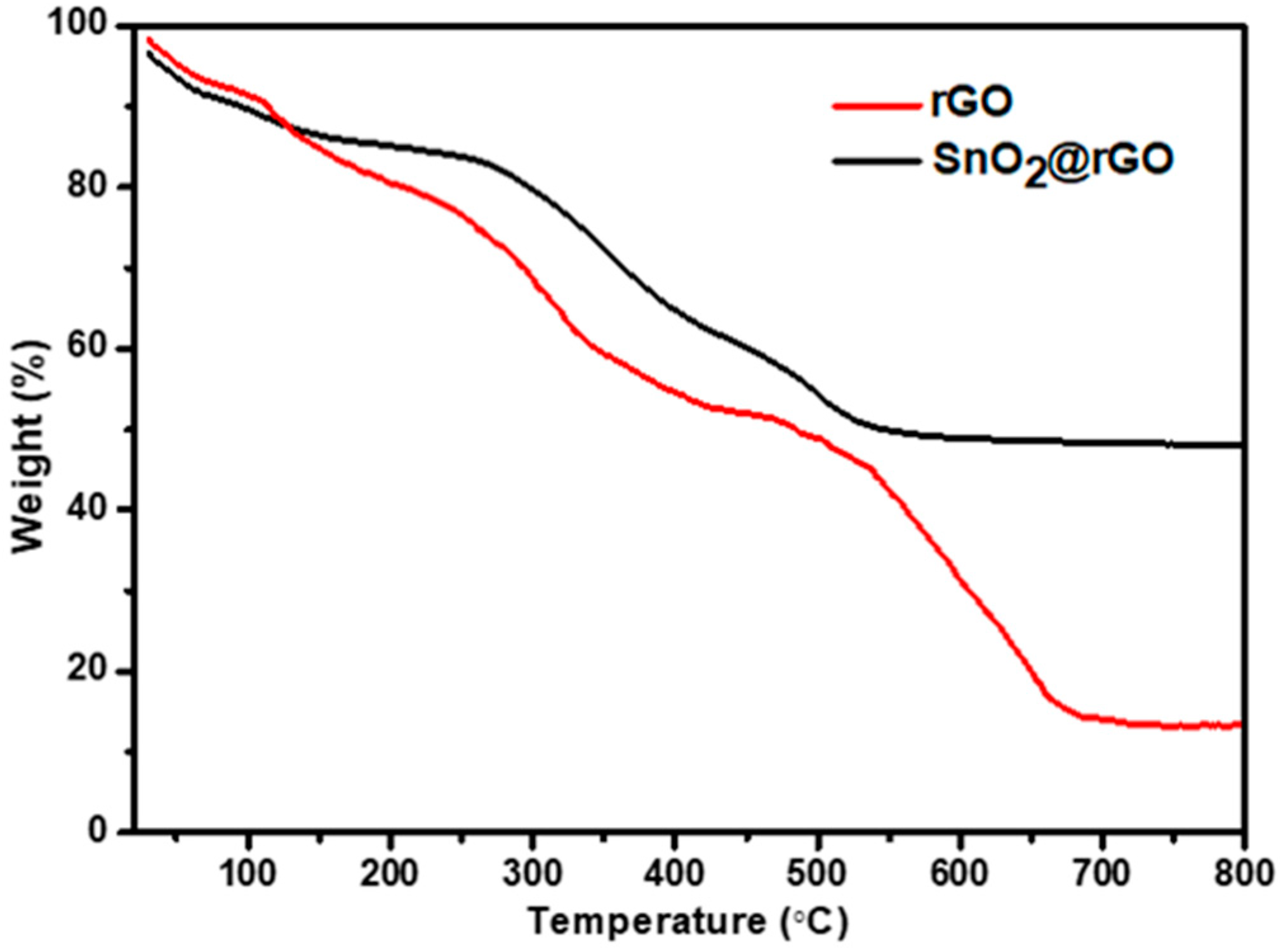
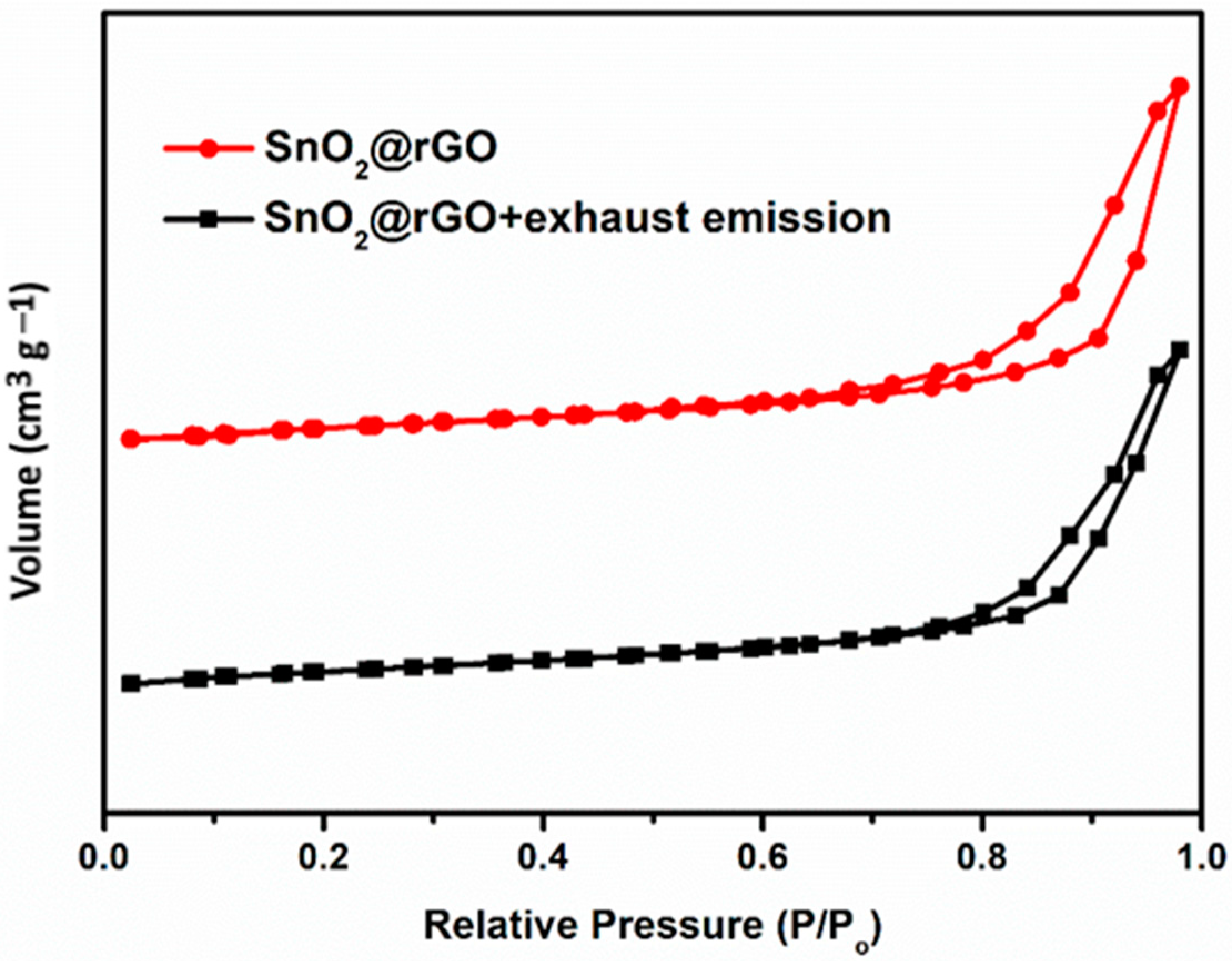
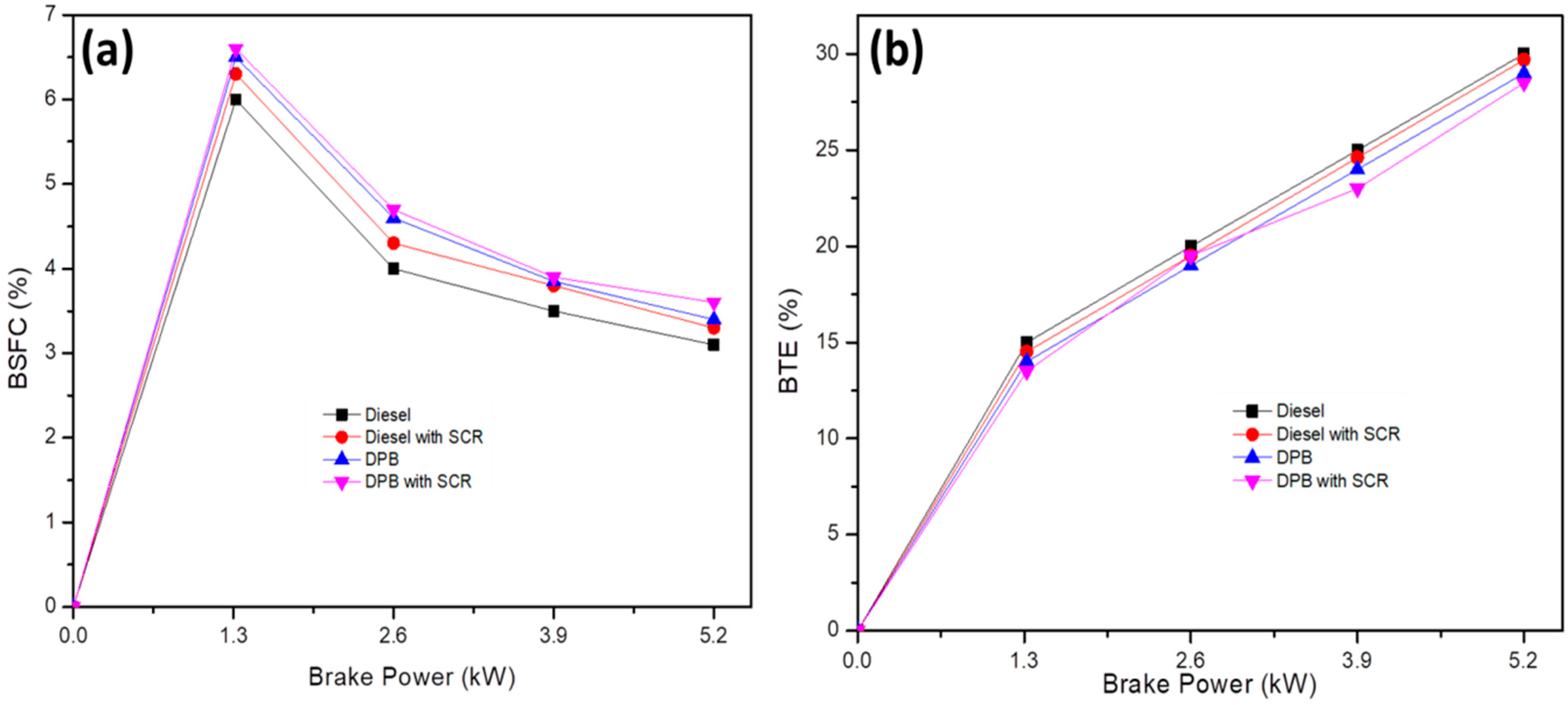
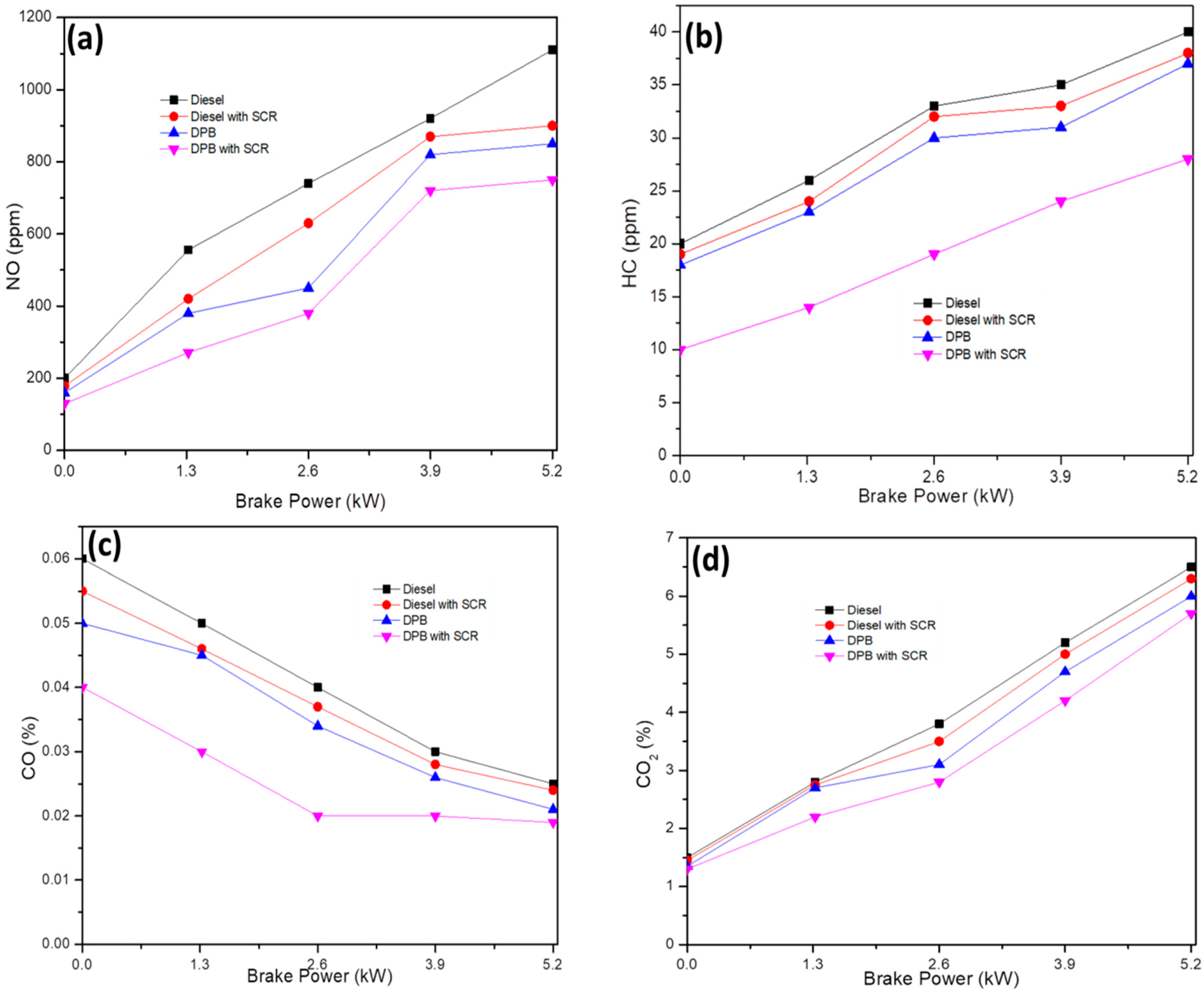
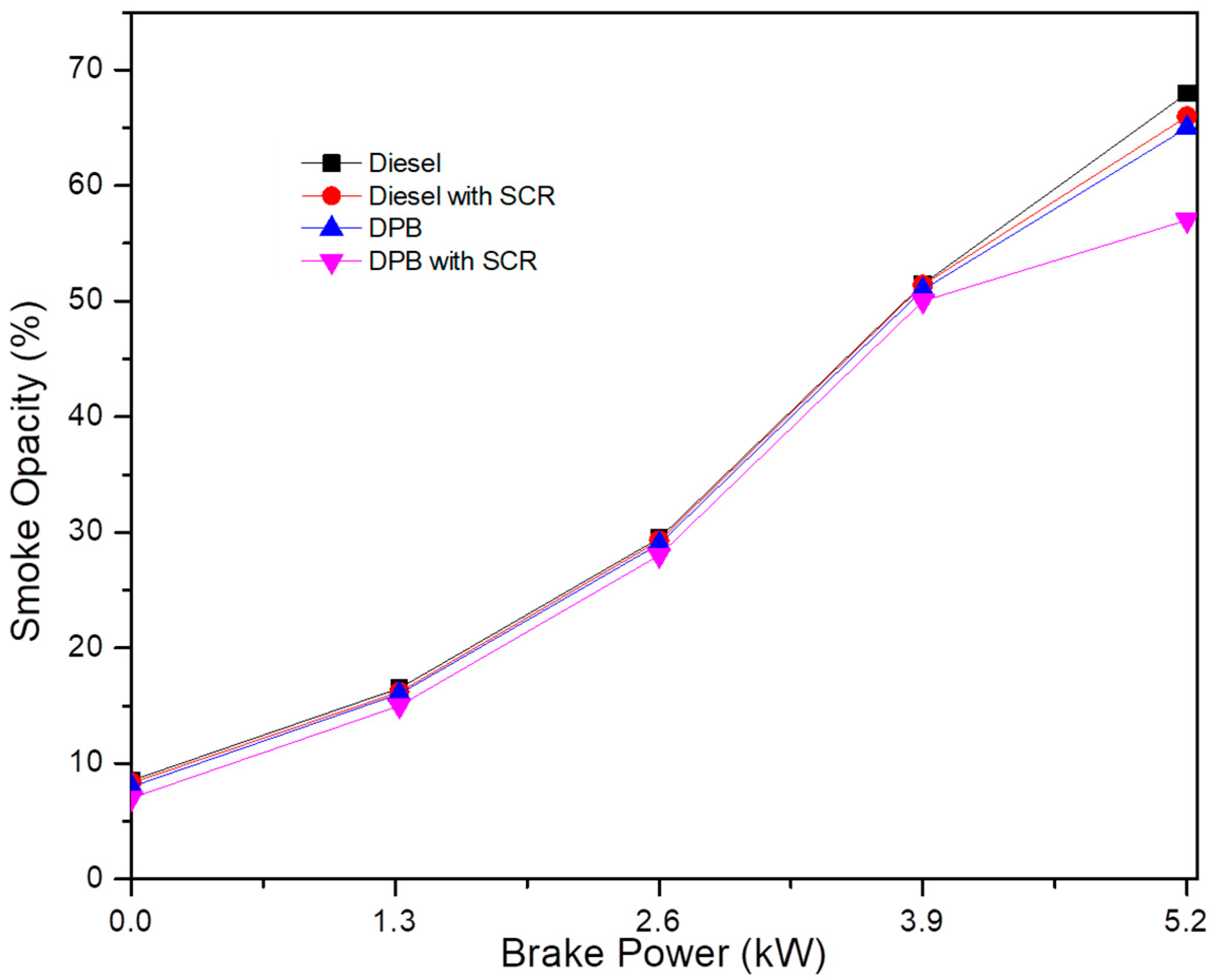
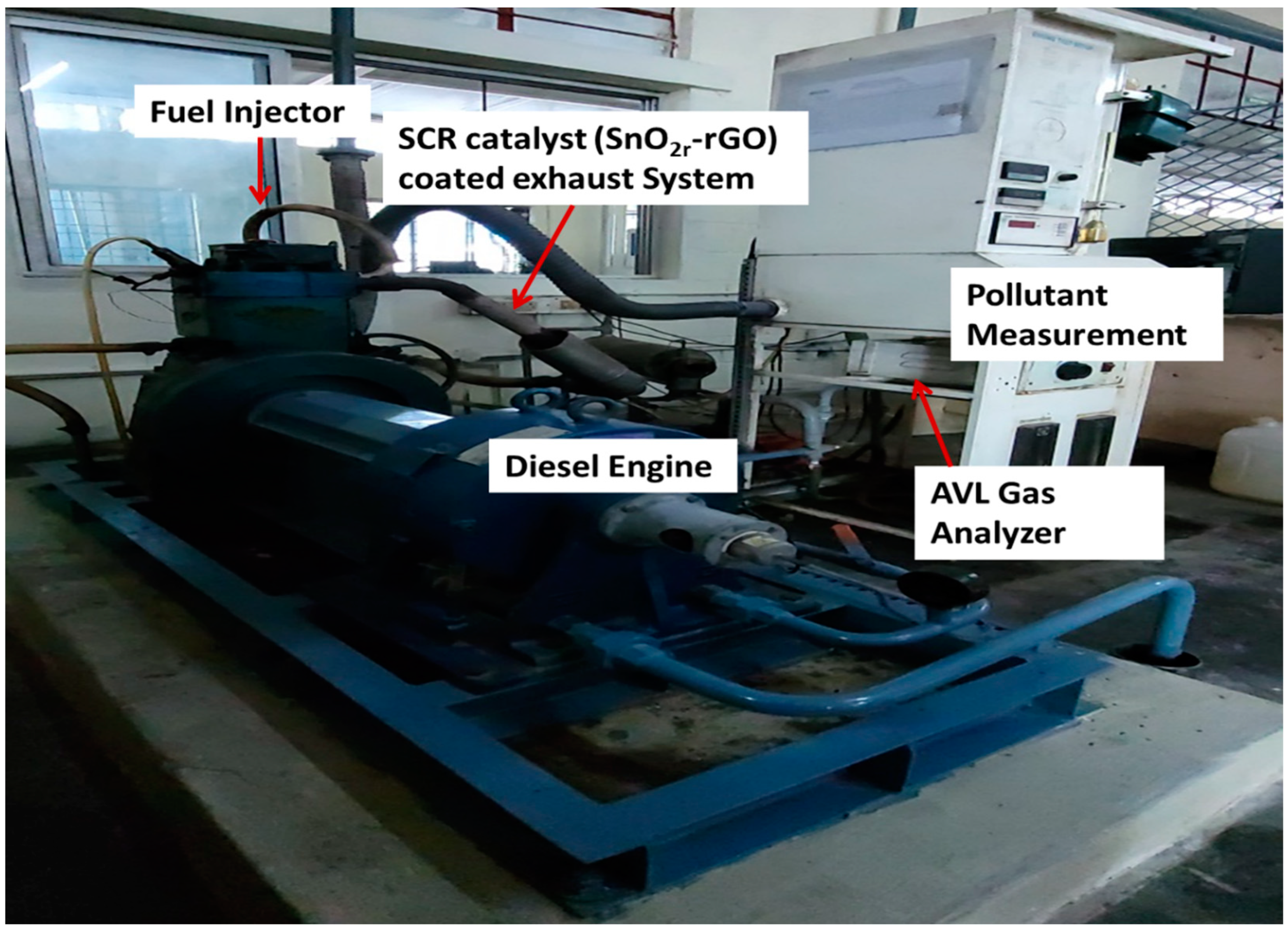
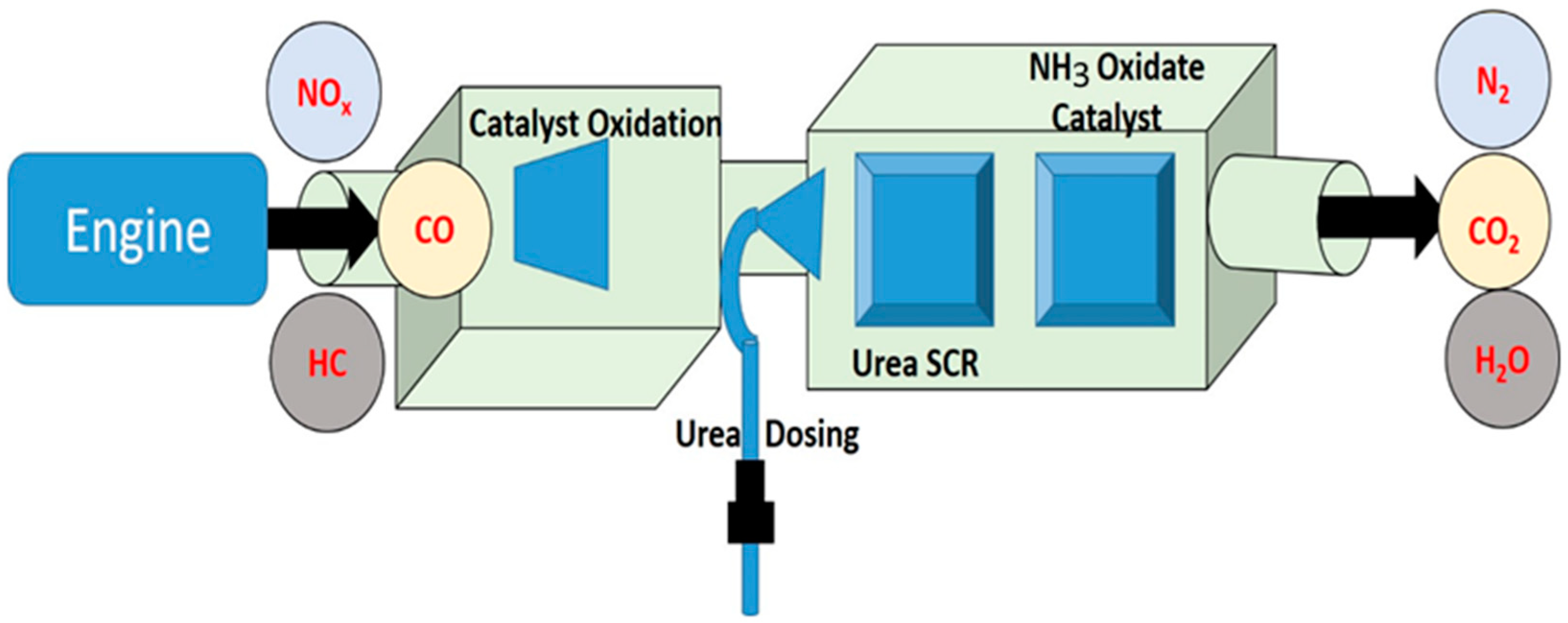
| Properties | Diesel | DPB |
|---|---|---|
| Density (g/cm3) | 0.8359 | 0.819 |
| Calorific value (kJ/kg) | 44,500 | 43,678 |
| Kinematic viscosity (cSt) | 2.12 | 2.27 |
| Flash point (°C) | 75 | 69 |
| Fire point (°C) | 65 | 68 |
Disclaimer/Publisher’s Note: The statements, opinions and data contained in all publications are solely those of the individual author(s) and contributor(s) and not of MDPI and/or the editor(s). MDPI and/or the editor(s) disclaim responsibility for any injury to people or property resulting from any ideas, methods, instructions or products referred to in the content. |
© 2023 by the authors. Licensee MDPI, Basel, Switzerland. This article is an open access article distributed under the terms and conditions of the Creative Commons Attribution (CC BY) license (https://creativecommons.org/licenses/by/4.0/).
Share and Cite
Premkumar, S.; Radhakrishnan, K.; Kalidoss, R.; Kumar, J.V.; Abirami, N.; Inbaraj, B.S. Synthesis, Characterization and Application of SnO2@rGO Nanocomposite for Selective Catalytic Reduction of Exhaust Emission in Internal Combustion Engines. Catalysts 2023, 13, 381. https://doi.org/10.3390/catal13020381
Premkumar S, Radhakrishnan K, Kalidoss R, Kumar JV, Abirami N, Inbaraj BS. Synthesis, Characterization and Application of SnO2@rGO Nanocomposite for Selective Catalytic Reduction of Exhaust Emission in Internal Combustion Engines. Catalysts. 2023; 13(2):381. https://doi.org/10.3390/catal13020381
Chicago/Turabian StylePremkumar, Subramanian, Kothalam Radhakrishnan, Ramji Kalidoss, Jothi Vinoth Kumar, Natarajan Abirami, and Baskaran Stephen Inbaraj. 2023. "Synthesis, Characterization and Application of SnO2@rGO Nanocomposite for Selective Catalytic Reduction of Exhaust Emission in Internal Combustion Engines" Catalysts 13, no. 2: 381. https://doi.org/10.3390/catal13020381
APA StylePremkumar, S., Radhakrishnan, K., Kalidoss, R., Kumar, J. V., Abirami, N., & Inbaraj, B. S. (2023). Synthesis, Characterization and Application of SnO2@rGO Nanocomposite for Selective Catalytic Reduction of Exhaust Emission in Internal Combustion Engines. Catalysts, 13(2), 381. https://doi.org/10.3390/catal13020381









